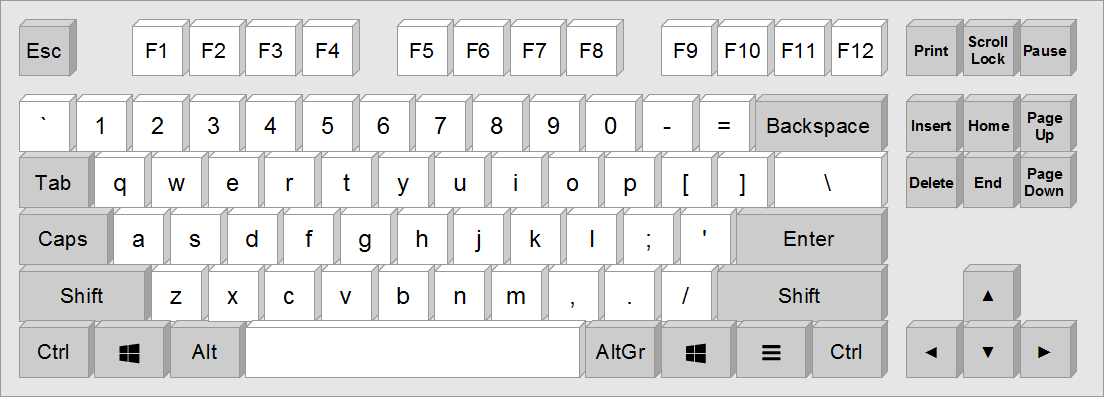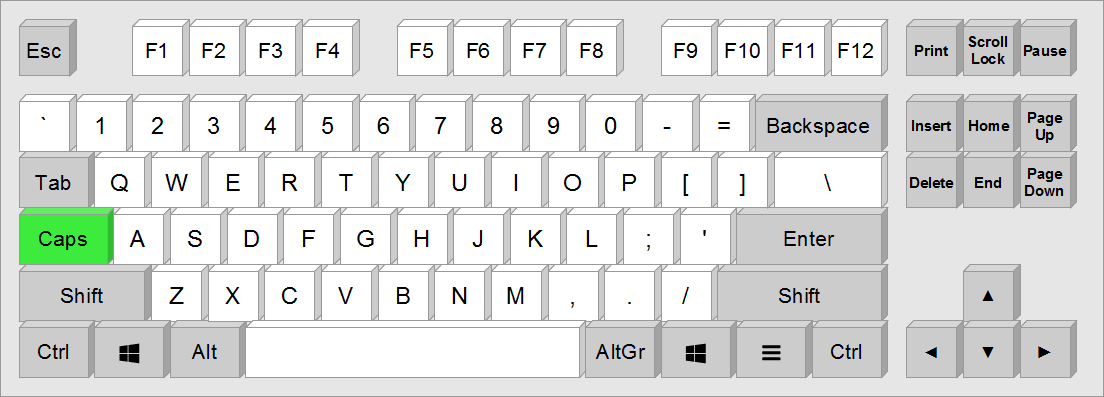EurKEY The European Keyboard Layout
Overview

EurKEY is based on the american keyboard layout. That's because the american layout is much more convenient to type specific characters. These include :// in http://, [] and {} in source code, or slashes (/) and backslashes (\) in a Unix shell.

Programmers will be particulary aware of previous country-specific redesigns of the keyboard layout, which made typing curly brackets quiet hard. The american layout is a lot more practical for coding.

Almost all language specific letters can be generated with Alt Gr. Additional characters can be generated with the composition keys (so called dead keys), highlighted in blue and purple in the picture. In addition, the entire greek alphabet is accessible via the composition key Ω.
| Key | Possible characters |
|---|---|
| ` | à, è, ì, ò, ù and uppercase |
| ^ | â, ê, î, ô, û, ŷ, ŵ and uppercase |
| ° | å, ċ, ġ, ż and uppcase |
| ´ | á, é, í, ó, ú, ý, ł, ń, ŕ, ć, ɓ, ś, ź and uppercase |
| ¬ | §, №, ½, ⅓, ¼, ⅔, ¾, ©, ℗, ®, ™, ℠, ↓, ↑, →, ←, ↘, ↙, ↖, ↗, ↔, ⇐, ⇓, ⇑, ⇒, ⇘, ⇙, ⇖, ⇗ , ⇔(Windows only) |
| α | The greek alphabet |

The shifted Alt Gr layout generates the capital counterparts of european characters. The composition key ± provides access to common math symbols. E. g. the infinite sign (∞) can be generated by pressing Shift+Alt Gr+m and i.
| Key | Possible characters |
|---|---|
| ~ | ã, õ, ñ and uppercase |
| ˇ | ǎ, ě, ǐ, ǒ, ǔ, č, ď, ǧ, ȟ, ǰ, ǩ, ľ, ň, ř, š, ť, ž and uppercase |
| ¯ | ā, ē, ī, ō, ū, ƀ, đ, ħ, ḻ, ŧ and uppercase, hyphen (1), en dash (2), em dash(3) (Some are windows only) |
| ¨ | ä, ë, ï, ö, ü, ÿ, ẅ, ẗ, ḧ, ẍ and uppercase |
| √ | ∞, √, ∑, ∏, ∟, ⁿ, ∂, −, ≠, ≈, ≤, ≥, ∫, ∩, ∕, ¼, ½ ,¾ ,°, ± and many more. Have a look here. (Windows only) |
© Steffen Brüntjen 2008-2017 · Last layout update: 15 May 2017

